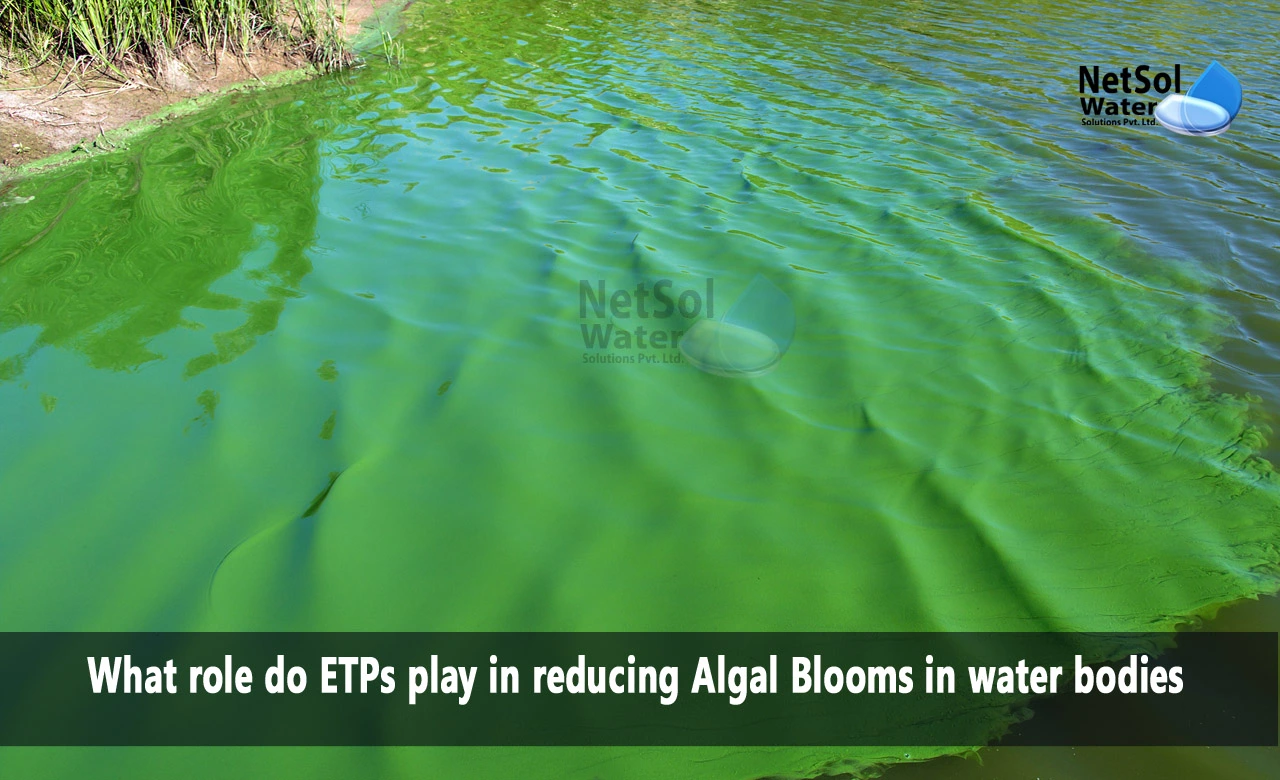What Role Do ETPs Play in Reducing Algal Blooms in Water Bodies?
Algal blooms are a growing environmental concern. These immoderate algae growths in water bodies can lead to quite several ecological, monetary, and public fitness troubles. Algal blooms can bring about oxygen depletion, fish kills, and the release of harmful pollution, making water bodies not worthy of human use and wildlife habitat. One promising technology to mitigate algal blooms and improve water quality is ETPs or Effluent Treatment Plants. In this blog, we can explore the role of ETPs in reducing algal blooms in water bodies.
Algal Blooms
Algal blooms arise whilst positive forms of algae, usually phytoplankton, hastily reproduce and accumulate in water bodies, which include lakes, rivers, and oceans. These blooms are often fueled via excess nutrients, often phosphorus and nitrogen, from resources like agricultural runoff, wastewater discharge, and storm water runoff. Warm temperatures and calm water conditions can also contribute to increased algal populations.
The overabundance of algae can have numerous poor outcomes:
1. Reduced oxygen levels: As algae multiply and die, they eat oxygen at some stage in decomposition, reducing oxygen levels within the water. Low oxygen, or hypoxia, can harm aquatic lifestyles and create "useless zones" wherein fish and different organisms battle to live.
2. Harmful toxins: Some algal species can produce harmful pollutants called dangerous algal blooms (HABs). These toxins can contaminate water resources and pose a full-size hazard to human and animal fitness.
3. Aesthetic and odor problems: Algal blooms can flip water bodies into ugly, foul-smelling, and unappealing environments, impacting tourism and recreational sports.
The Role of ETPs
Effluent Treatment Plants (ETPs), also called water treatment plant life, play a crucial function in lowering the poor effects of algal blooms and preserving water pleasant. Here are numerous ways in which ETPs make contributions to this purpose:
1. Nutrient removal: ETPs are ready with procedures that put off extra nutrients like phosphorus and nitrogen from wastewater. By decreasing nutrient ranges in the water bodies that get hold of dealt with effluents, ETPs assist in restricting the situations that sell algal growth.
2. Algal biomass elimination: Some ETPs contain processes like coagulation and flocculation, which assist in settling out algal cells and different suspended matter, bearing in mind their removal. Additionally, these vegetation may use filtration and disinfection techniques to reduce algal populations.
3. Monitoring and manipulation: ETPs often hire superior tracking systems to discover modifications in water and respond promptly to conditions favouring algal blooms. By adjusting their treatment procedures in response to changing circumstances, ETPs can help save you or mitigate algal blooms before they become complex.
4. Public awareness and schooling: ETPs can also play a position in teaching the general public about the significance of responsible nutrient control and water conservation to lessen the danger of algal blooms. This focus can encourage people and groups to do so to protect their neighbourhood water bodies.
5. Water reuse and conservation: Many ETPs are exploring innovative answers for water reuse and conservation, reducing the call for natural water resources and minimising the ability for nutrient pollution that may cause algal blooms.
Challenges and Future Directions
While ETPs are essential in the fight against algal blooms, several demanding situations continue to be:
1. Aging infrastructure: Many ETPs need considerable enhancements and modernisation to satisfy the demands of converting weather and growing populations.
2. Climate change: Rising temperatures and changed precipitation patterns can create situations greater conducive to algal blooms, making it difficult for ETPs to conform to changing environmental conditions.
3. Emerging contaminants: ETPs ought to also deal with rising contaminants, inclusive of prescription drugs and private care merchandise, which can further complicate water remedies and affect algal bloom dynamics.
Conclusion
Effluent Treatment Plants (ETPs) are critical to reducing algal blooms in water bodies. By successfully removing excess nutrients, monitoring water quality, and teaching the general public, ETPs play a critical function in safeguarding the health and sustainability of aquatic ecosystems. To address the demanding situations posed by algal blooms in the future, persistent funding in ETP infrastructure, as well as studies and innovation, is crucial. The collaboration of ETPs, government companies, communities, and environmental organisations is vital to protect our water bodies and ensure a healthier destiny for all.
Netsol Water is Greater Noida-based leading water & wastewater treatment plant manufacturer. We are industry's most demanding company based on client review and work quality. We are known as best commercial RO plant manufacturers, industrial RO plant manufacturer, sewage treatment plant manufacturer, Water Softener Plant Manufacturers and effluent treatment plant manufacturers. Apart from this 24x7 customer support is our USP. Call on +91-9650608473, or write us at enquiry@netsolwater.com for any support, inquiry or product-purchase related query.



